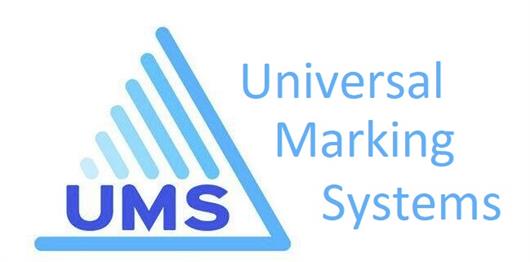Selecting Marking Technology
There are a variety of permanent marking technologies available for a wide range of materials and picking the right one for your application can be a challenge. Understanding each technology on the market can help you find a solution that gives the best mark, increase productivity and reduce costs.
The three main technologies for marking components are laser, dot peen and electrochemical and within those categories are a variety of systems to suit individual application needs from hand held to fully integrated systems.
When choosing a marking system it’s important to consider the demands of the application. A marking standard for a particular industry, e.g. aerospace, nuclear or medical, may dictate the process and marking specification to be used on a component. Other considerations will include looking at the best marking process to suit the material, accessibility to the marking area, cycle time, batch sizes, the component function and how it may be affected by environmental factors. Common environmental factors to consider are temperature, subsea conditions, stress factors and post marking treatments such as shot blasting, painting and galvanising.
Laser marking is a non-contact form of marking, making work-holding simple and cost effective. Laser is extremely fast for large batch runs of the same data and delivers high quality marks. It’s good for variable marking and array marking. Laser marking is ideal for workstation and production line marking as it is low maintenance. Lasers can mark onto most materials although they can require different light sources, e.g. Fiber lasers are ideal for metal marking and some plastics but CO2, green or UV lasers are normally better for plastics. Lasers are a significant capital investment compared with other forms of marking and whilst they are fast for many applications, they can be slow for large solid graphics. Extraction is also normally required.
Electrochemical marking (also known as etching) is a process that consists of passing a low electrical current through a stencil to permanently mark virtually any conductive metal. The process is economical and simple to use and delivers a very high quality, high contrast mark. The mark is created through an oxide or below surface etch. Marking can be done on a range of conductive metals and surface finishes, varied component sizes/shapes and is ideal for serial/part numbers, data matrix, logos, text on an arc, date/batch numbers and decorative marking. The versatility of electrochemical marking allows operators to quickly switch between materials needed to be marked and a wide variety of accessories to suit most applicatoins.
Most marks can be made in 0.5 to 4 seconds regardless of the size of mark. Electrochemical marking meets both of the latest Aerospace standards. UMS have a range of high purity electrolytes that are approved for Aerospace and are certified as safe for marking surgical components. Aerospace\Nuclear grade electrolytes are tested and verified by an independent lab for their purity levels.
Electrochemical marking is perfect for marking thin wall section without distortion and is ideal for both low volume and higher volume batch runs. No fixture is necessary. Equipment is compact enough to reside at the workstation and is fully portable.
Dot Peen marking uses a solid carbide stylus to indent a component’s surface with a series of dots to make up characters, shapes & logos. The machine requires a controller and can receive data from USB, keyboard, barcode scanner, PC or PLC. It delivers high precision marks with low material stress. It’s available in bench-top, hand-held and combo models. The electromagnetic assembly stylus is quiet and can be used for serial and part numbers, date/batch codes, logos and data matrix codes including mark and read applications. They work well in harsh environments and marks can still be read after post marking treatments such as plating or painting. Dot Peen can mark up to 62HRc. A wide range of accessories include a rotary device, nameplate holder and barcode reader.
Our latest range of dot peen and laser systems have been designed for Industry 4.0 offering new generation data management and connectivity to deliver a faster set up, better communication, faster marking, quality control and enhanced operator experience.
UMS Ltd manufacture and supply a wide range of marking technologies including those mentioned. Our area of expertise is the ability to assess and understand your marking requirements fully, through our highly trained and experienced Engineers. We offer a comprehensive after sales service and we will ensure you get the right solution at the right price.



